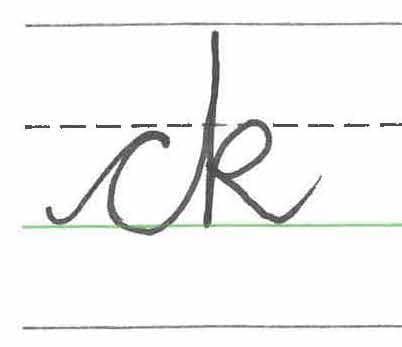Practising handwriting by writing dialogue
I can write correctly punctuated dialogue in legible, cursive handwriting.
Practising handwriting by writing dialogue
I can write correctly punctuated dialogue in legible, cursive handwriting.
Link copied to clipboard
These resources will be removed by end of Summer Term 2025.
Switch to our new teaching resources now - designed by teachers and leading subject experts, and tested in classrooms.
These resources were created for remote use during the pandemic and are not designed for classroom teaching.
Lesson details
Key learning points
- Direct speech is signalled to the reader in text by inverted commas.
- Direct speech can be written in a speech first sentence or a speech second sentence.
- Direct speech always starts with a capital letter.
- After forming a capital letter, you need to lift your pencil to start the next part of the word.
- The writing is legible and the letter sizing is consistent.
Keywords
Direct speech - the term used for a character speaking out loud in a text
Inverted commas - a pair of punctuation marks that signal direct speech to the reader
Speech first sentence - a sentence that includes direct speech first before the reporting clause
Speech second sentence - a sentence that includes direct speech second after the reporting clause
Common misconception
Some children might forget to add the capital letter for the direct speech within a speech second sentence or might try to join the capital letter to the other letters.
Model the habit of looking and thinking about your sentence before you write it. Where will my punctuation be? Where will my capital letters be? This way children will have the time to think about it before they start writing.
To help you plan your year 5 english lesson on: Practising handwriting by writing dialogue, download all teaching resources for free and adapt to suit your pupils' needs...
To help you plan your year 5 english lesson on: Practising handwriting by writing dialogue, download all teaching resources for free and adapt to suit your pupils' needs.
The starter quiz will activate and check your pupils' prior knowledge, with versions available both with and without answers in PDF format.
We use learning cycles to break down learning into key concepts or ideas linked to the learning outcome. Each learning cycle features explanations with checks for understanding and practice tasks with feedback. All of this is found in our slide decks, ready for you to download and edit. The practice tasks are also available as printable worksheets and some lessons have additional materials with extra material you might need for teaching the lesson.
The assessment exit quiz will test your pupils' understanding of the key learning points.
Our video is a tool for planning, showing how other teachers might teach the lesson, offering helpful tips, modelled explanations and inspiration for your own delivery in the classroom. Plus, you can set it as homework or revision for pupils and keep their learning on track by sharing an online pupil version of this lesson.
Explore more key stage 2 english lessons from the Building handwriting fluency through speed, choices and writing dialogue unit, dive into the full secondary english curriculum, or learn more about lesson planning.

Content guidance
- Risk assessment required - physical activity
Supervision
Adult supervision required
Licence
Starter quiz
6 Questions






